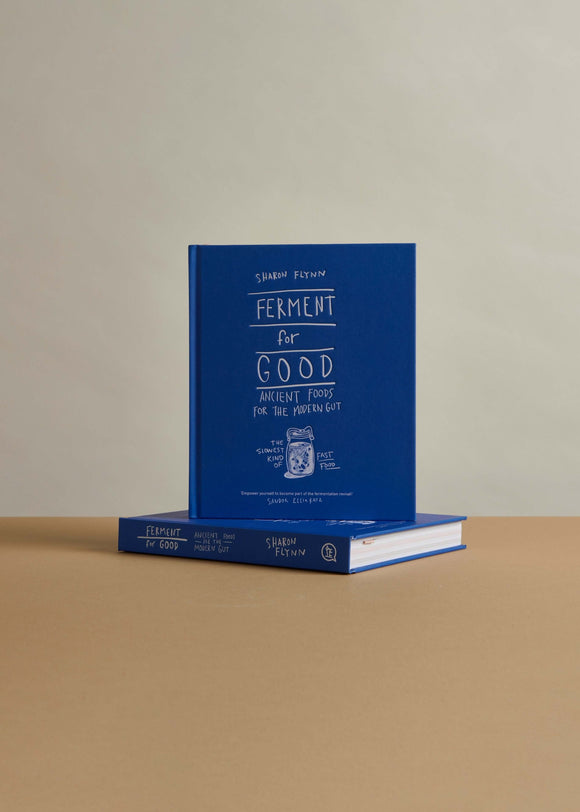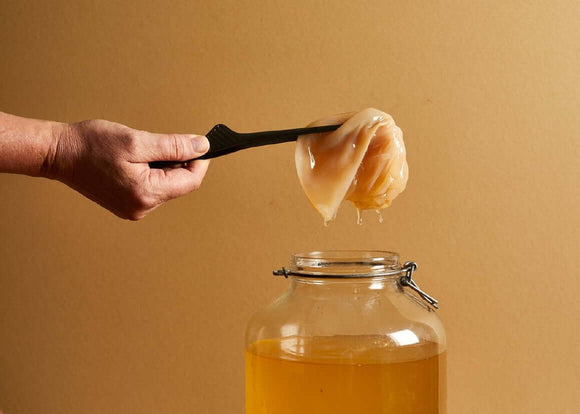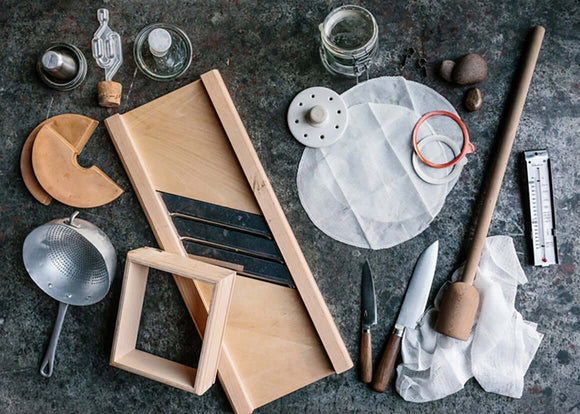Policies
What is your cancellation policy?
Unfortunately, we cannot accept any cancellations once you have booked your Event or Workshop. However, we are able to offer a credit note up to 14 days before an event, so that you can choose a different Event or Workshop to attend. You must notify us by email at hello@thefermentary.com.au . If it is fewer than 14 days before an event we will not be able to offer you a credit note, except at our own discretion for exceptional circumstances. However, you may transfer your booking to another person anytime, just let us know at the email above as soon as possible!
If we need to cancel an event for any reason, we may do so at any time before the event is scheduled to begin. We do not expect this to happen except in exceptional circumstances, and of course we will give you the option to either receive a full refund or provide you with a credit note for the full amount so you can book a different Event or Workshop. We won’t be able to compensate you for any other expenses you’ve incurred in connection with the Event or Workshop.
See our Workshops and events Terms and Conditions and our Online Store Terms and Conditions to read more.
What is your returns policy?
If any product is faulty on arrival, please email us at hello@thefermentary.com.au within 7 days of delivery. We will offer a full refund or replacement upon verification of the issue. Proof of purchase and photos of the product may be required.
We do not offer change-of-mind returns.
See our Online Store Terms and Conditions and our Online Store Terms and Conditions to read more.
Regarding Ferments (water kefir, krauts, kimchis)
Do I need to keep water kefir in the fridge?
Yes. It will continue to ferment if left outside of the refrigerator, at room temperature, it will become fizzier and slightly more alcoholic over time.
What is the most powerful ferment?
Hmmm - they all work in different ways it seems. Milk kefir is pretty amazing - but then so is kimchi with all of that ginger and garlic. Oh, but how about the ginger in the water kefir … the kraut juice is great too…
My kefir seems flat.
Leave it on the bench out of the fridge overnight and watch it come back to life!
Why does my kefir, kimchi or kraut fizz out when I open it?
There is life in your jar. We tend to wait long enough for the life to settle a bit, and pop them in the fridge where the life becomes less active. If somehow the fridge wasn’t as cold as it should be, or the kraut comes out of the fridge for even an hour - that eager life will wake up and start eating any sugars left in the ferment - causing carbondioxide - gas. It’s pretty lovely to see it - we call it blooming in krauts and kimchis- so open over the sink if you see any pressure in there at all. No matter what - the bubbling means its fresh. It is most certainly OK to eat or drink. It couldn’t be better actually!
Mine was so fizzy - I lost half of my bottle/jar when I opened it.
It can sometimes take 5 minutes to open a particularly active bottle of water kefir. Same with wild fermented sake, some beers and other natural ferments. Open and close, let it settle, have a glass ready and pour as it fizzes out. This is due to the life in the product, and unfortunately we cannot offer refunds or replacements for kefir lost in this way.
How long will it last in my fridge after I open it?
As long as you have kept it clean - and there aren’t too many little pieces all sitting on the jar, it will be fine. Push it down each time, but it can be fine for a year in your fridge…. Not sure WHY anyone would treat a kraut or kimchi as a condiment that gets lost at the back of a fridge though, are you?
Do you pasteurise your ferments?
We are all about life. Not killing life - pasteurisation was good for many things - but we consider ourselves “post-Pasteurian’. Once foods were pasteurised - heated to kill all of the life in the food so it could be shelf-stable and easily shipped all over the world - our food life changed a lot. We are trying to bring one of the better old ways back. Ferments just need to be refrigerated. If they aren’t - they’ll keep fermenting - which would be fine too.
Why isn't there more liquid in my jar? I thought they needed liquid to cover them.
Ferments need liquid to cover them when you are fermenting. We need the liquid that comes from within the vegetable - we NEVER add water - to keep the oxygen out. Once they are fermented - we feel it would be ripping you off to fill the weight of the jar with liquid. We push as much cabbage in the jar to the point that we once measured there could be half a cabbage per 700g jar.
How long does water kefir last after opening?
Our recommended ‘best before’ date is 9 weeks from the date of bottling. We recommend drinking your bottle of water kefir 1-2 days after opening. It will not go ‘off’ as such; it simply won’t be at its peak deliciousness.
Why do you use fish sauce in your kimchi?
Fish sauce adds a depth of flavour. But we are working on some sauces made from Kombu and mushrooms to replace that soon. We also have vegan kimchi if fish sauce is a no-no ingredient for you.
Where does water kefir come from?
No-one actually knows where the original water kefir ‘grains’ (also known as a SCOBY) came from. A popular theory is that they originated from the Opuntia cactus in Mexico. This theory is persuasive because the Tibicos culture that is part of the water kefir grains grows on this plant. Remarkably, water kefir grains have been shared person-to-person for centuries, as they can’t be grown from scratch.
Is water kefir safe for coeliacs?
Yes. Although we say ‘water kefir grains’, water kefir does not contain any gluten. ‘Grain’ only refers to the grain-like shape of the starter bacteria (SCOBY)
How much sugar is in kefir?
The water kefir is fed sugar - it consumes about 97% of that - and that’s how we have natural fizziness. Isn’t it amazing? If you are after a no sugar diet, or love Splenda, Xylitol, Erythritol and the other non-fermentables - go to a cheap, supermarket brew - they love saying sugar-free to you.
Why don’t other water kefirs contain alcohol?
Many other water kefirs are alcohol-free, because a small about of water kefir is added as an ingredient to soda-style drinks, or they have been heavily diluted. Any kefir that has been naturally, slow-fermented will always contain a low amount of alcohol that occurs as part of the fermentation process.
What is the best ferment for...(a certain health issue)
Don’t ask us that – we’re fermenters, not doctors! But psychiatrists, naturopaths, chiropractors and more recently actual doctors are prescribing it for all kinds of things. As well as nature walks, eating with family or friends, less screen time, hugging people. These are all good things.
Can children eat or drink this?
Yes they can. Keep in mind the water kefir has residual alcohol so maybe water it down if you are worried about that.
How much should I take?
Lots of people have asked us this - to be clear - it is our aim to make the most delicious ferments we can - and to talk and share about them and provide ideas for how to eat them. This question has caused a bit of reflection. It is asked regularly enough to talk about here. Our ferments are brimming with diverse life, and fibre, and vitamins and nutrients. BUT. Eat it because it’s delicious. These sour and bitter foods that were once in our everyday diet have been missing for a generation or two and need to be put back. It won’t happen if we think of it as a medicine to take. This is gorgeous, precious food that has been prepared with love - enjoy. If you know you have a serious gut issue - or have never eaten any living foods like this, then start small - use as a condiment, eat small amounts frequently. And try to eat a variety. We are after a diverse array of bacteria after all.
Why do I need to store these ferments in the fridge?
To keep them fermented right where they are. Slowed down and waiting to be eaten. They can come alive in your gut where it is nice and warm.




